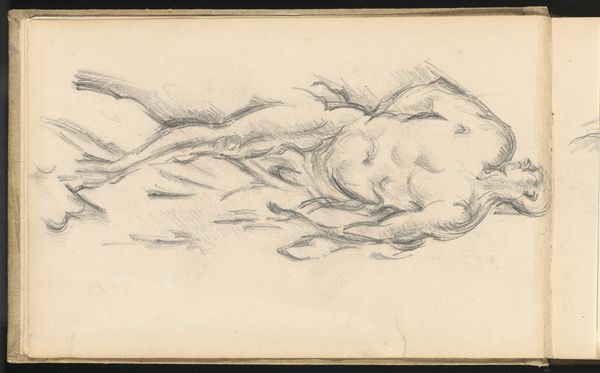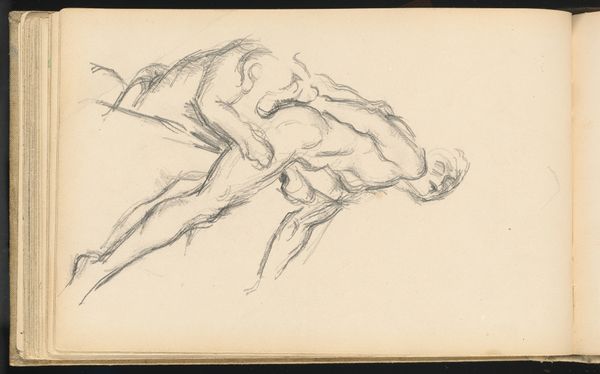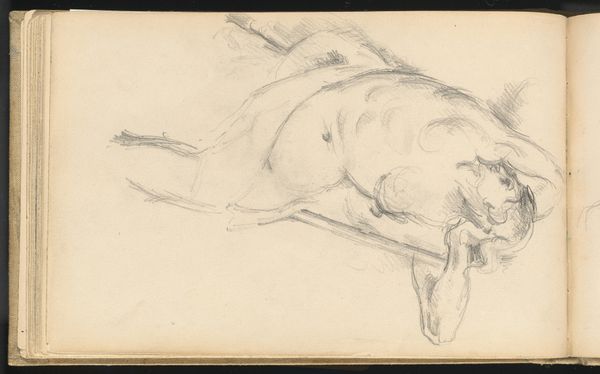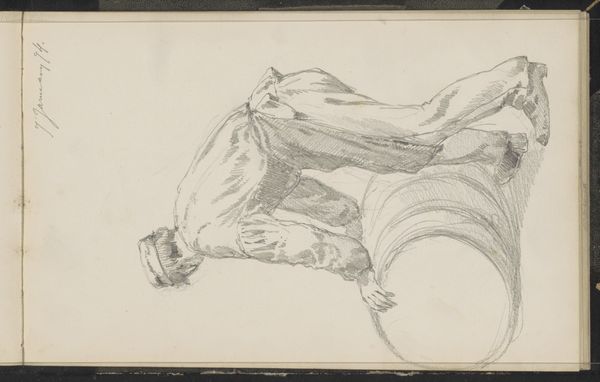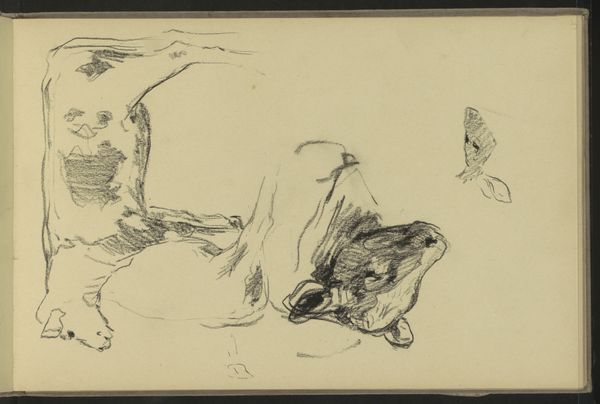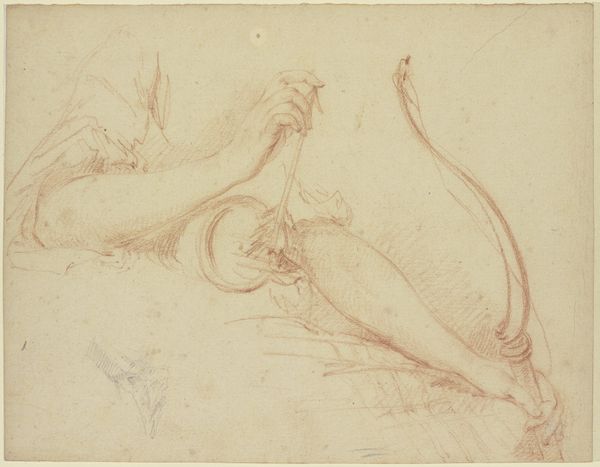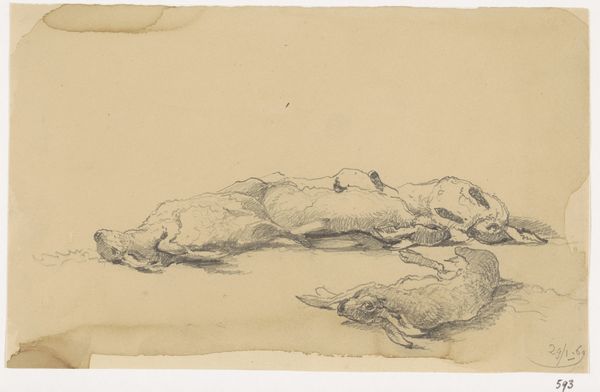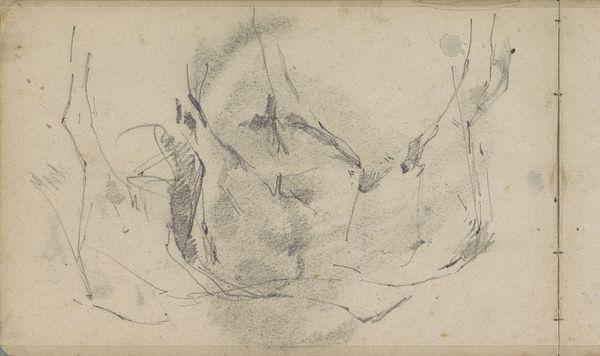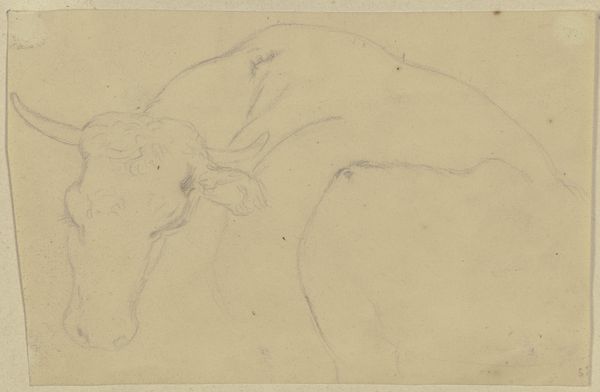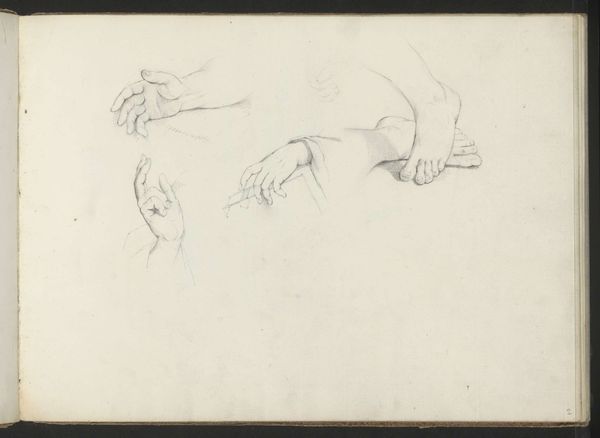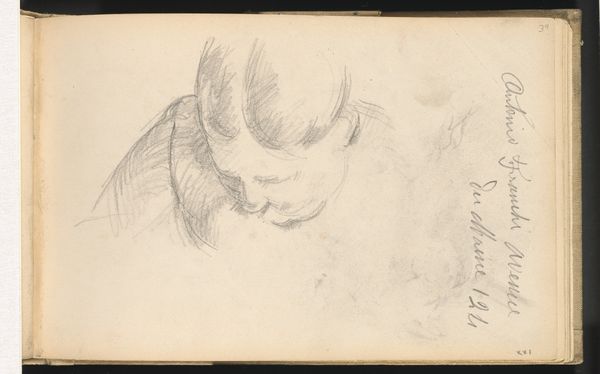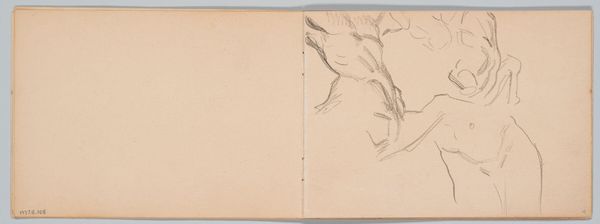
Study of the Allegorical Figure of the Genius of Health from Rubens' "The Birth of Louis XIII at Fontainbleau" 1895 - 1898
0:00
0:00
drawing, pencil, graphite
#
drawing
#
figuration
#
pencil
#
graphite
#
nude
Dimensions: overall: 23.7 x 15.2 cm (9 5/16 x 6 in.)
Copyright: National Gallery of Art: CC0 1.0
Curator: Paul Cézanne made this graphite drawing sometime between 1895 and 1898. It is a study of Rubens’s “The Birth of Louis XIII at Fontainbleau,” and the figure here is meant to embody the Genius of Health. Editor: It feels so fragile, somehow. The lightness of the graphite rendering gives the figures this ephemeral quality, like they might float right off the page. Curator: Exactly. It’s interesting to consider Cézanne grappling with the robust, almost overwhelming, allegorical imagery of Rubens. Where Rubens used flesh to express abundance, Cézanne strips the figure back to pure form, interrogating it. Editor: It strikes me that Cézanne is not just studying the final image, but almost dissecting Rubens’s method of building the figure. He uses short, repetitive strokes to discover the underlying structure. You can almost see the artist’s hand, his labor, as he works over the page, trying to understand the principles. Curator: And consider that the “Genius of Health” in Rubens’s painting is symbolic, a culturally embedded signifier of well-being and prosperity tied to the birth of a future king. Here, that overt symbolism is minimized in favour of close formal observation. The pencil rendering almost seems to demystify that kind of idealized, propagandistic image, peeling back the layers. Editor: And look at the density of marks at the joints and around the curves. It's a record of Cézanne's active engagement with the page. The materials – graphite and paper – become almost performative, showing the direct trace of Cézanne’s thinking through mark making. It is, quite literally, about laying the groundwork. Curator: Absolutely. And what do we get when he boils Rubens' image down to its elemental components? A vulnerable, tentative human form, rather than an inflated ideal. It suggests how symbolism can be reworked over time as our understandings of human potential evolve. Editor: I'll never see Rubens the same way. Knowing how Cézanne dissected that allegorical figure has exposed new facets to me, opening fresh dialogues.
Comments
No comments
Be the first to comment and join the conversation on the ultimate creative platform.

